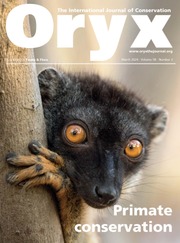Efforts to integrate tree plantation development, peatland conservation and arbuscular mycorrhizal fungal innovations are crucial for sustainable peatland management. During 2021–2024, Indonesia's Ministry of Forestry, the National Research and Innovation Agency, and Indah Kiat Pulp & Paper collaborated to research ways to restore degraded peatlands whilst balancing conservation and economic value. Native peatland species such as Lophostemon suaveolens (Sol. ex Gaertn.) Peter G.Wilson & J.T.Waterh., Melaleuca cajuputi Maton & Sm. ex R.Powell, and Cratoxylum arborescens (Vahl) Blume (all categorized as Least Concern on the IUCN Red List) offer sustainable alternatives to exotic species traditionally used in Indonesia's pulp and paper industry, such as acacia and eucalyptus. Arbuscular mycorrhizal fungal inoculation in nurseries has significantly improved the growth of these alternative species, reduced chemical fertilizer dependency and enhanced peatland restoration efforts.
We, eleven researchers from the fields of microbiology, silviculture, genetics, climate change, forest ecology and policy analysis, planted 3,000 seedlings of M. cajuputi, L. suaveolens and C. arborescens inoculated with mycorrhiza l fungi in a 4.5 ha plot in Rasau Kuning, Riau, Indonesia. During the 6-month nursery phase in early 2021, biomass carbon storage reached 0.61 t of carbon. Melaleuca cajuputi grew 21% taller and exhibited 17% greater stem diameter with inoculation, and L. suaveolens and C. arborescens also thrived. Use of chemical fertilizer decreased by 50%. Our field trials, which continued until December 2024, validated the long-term benefits of arbuscular mycorrhizal inoculation, demonstrating that after 3 years, inoculated plants sustained steady and robust growth. In field plantations, 2-year old L. suaveolens stored 7 kg of carbon per tree, and M. cajuputi and C. arborescens stored 4.9 and 1.4 kg of carbon per tree, respectively. The cumulative carbon stock was 12.6 t of carbon per ha after 2 years, equivalent to 46.3 t of CO2e per ha.
Our model shows that peatland restoration can balance economic value, conservation and emissions reduction. Arbuscular mycorrhizal fungi enhance nutrient uptake, boosting plant resilience and reducing fertilizer use, making restoration more cost-effective. Using native species supports biodiversity and aligns with Indonesia's forestry and other land use Net Sink 2030 goals. Scaling this approach in industrial forestry, integrating biotechnology with traditional knowledge, offers a sustainable path for economic value, peatland conservation and carbon sequestration.

The potential of peatland native species 3 years after planting: (a) Lophostemon suaveolens, (b) Melaleuca cajuputi and (c) Cratoxylum arborescens planted with arbuscular mycorrhizal inoculants. Photos: Wahyu Catur Adinugroho.


